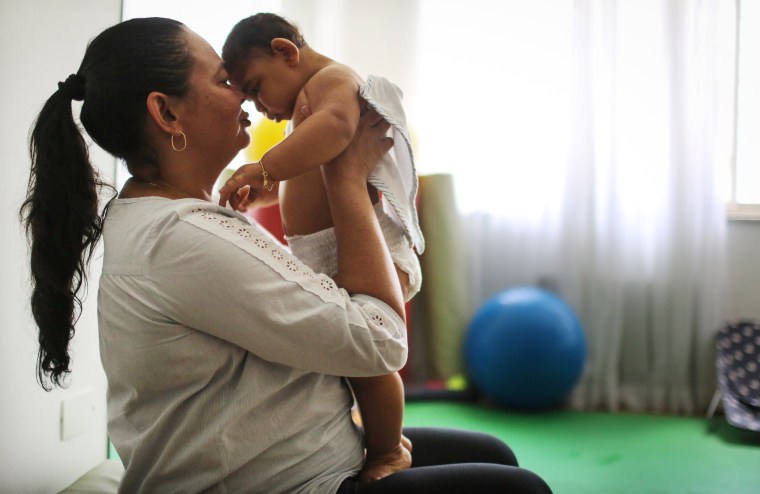Zika virus raised the risk of birth defects twentyfold fold among infected U.S. women, federal researchers said Thursday.
It's just a rough estimate, nowhere near to being precise, and it's taken from just a handful of states. But such a giant spike is notable, and it shows the need to keep tabs on pregnancies, the team at the Centers for Disease Control and Prevention said.

Zika is known to cause a range of birth defects if a woman is infected while pregnant. The first to be noticed was microcephaly — an abnormally small head caused when the brain fails to develop completely.
But now doctors have seen other profound defects, such as collapsed skulls and other deformities, as well as milder problems, such as eye defects. Some are so severe that they cause miscarriages.
Dr. Janet Cragan of the CDC's birth defect division and colleagues analyzed birth defect data from 2013 and 2014 in Massachusetts, North Carolina and Georgia, which have birth defect surveillance programs.
Related: Zika-Affected Babies Can Cry 24 Hours a Day
They found a rate of 2.86 birth defects per 1,000 births.
Then they looked at Zika birth defect registries that were started after Zika began arriving in the United States, carried or transmitted by travelers from Zika-affected regions. In the same three states, they found 26 infants and fetuses with Zika-connected birth defects born to 442 Zika-infected pregnant women from January through September 2016.
That works out to a rate of 58 birth defects per 1,000 births, they report in the CDC's weekly report on death and disease.
Related: Questions About Pregnancy and Zika
"This proportion (58.8 per 1,000) is approximately 20 times higher than the prevalence (2.86 per 1,000) from the three population-based birth defects surveillance programs during the pre-Zika years," they wrote.
And of the 26 Zika-affected babies they found, 22 of them had a brain defects of some sort. "This proportion (49.8 per 1,000) is approximately 33 times higher than the prevalence (1.5 per 1,000) among pregnancies in the pre-Zika years," they wrote.
They admit it's not a terribly exact comparison, but it gives a good ballpark estimate of just how dangerous Zika is. One study last year found that Zika caused damage in 6 percent of all babies born to women infected with Zika in the United States and 11 percent of those who were infected early in pregnancy.
Zika was an almost unknown virus before it arrived in Brazil and started causing birth defects in 2015. Even when doctors there started sounding the alarm, public health experts were unsure whether the rate of microcephaly had really gone up compared to what might normally be expected.
The latest studies show that Zika's arrival at least doubled the birth defect rate across all of Brazil — even though only small areas were affected seriously by the mosquito-borne virus.
Studies also have shown that Zika raised the rate of Guillain-Barré syndrome, a temporary paralysis caused by infections. There was a similar increase in rarer nervous system conditions, including encephalitis, myelitis and encephalomyelitis, the team found. These are inflammations of the brain and the spinal cord that can be deadly.
The new study shows that having good data can tell doctors right away if something unusual is going on.
Related: Miami Protesters Fear Pesticides Are Worse Than Zika
The CDC and the World Health Organization say pregnant women should not travel to areas with Zika.
"If a pregnant woman must travel to or lives in an area with Zika, she should talk with her healthcare provider and strictly follow steps to prevent mosquito bites and sexual transmission of Zika virus," the CDC said. "Pregnant women with possible exposure to Zika virus should be tested for Zika infection even if they do not have symptoms."
Zika is mostly carried by travelers to the United States, but the virus has been spread in Florida by local mosquitoes, and there have been home-grown cases in south Texas, as well.
Florida reported three new local cases Thursday, although two of the patients appeared to have been infected last year.
Travelers infected with Zika can infect local mosquitoes when they get home if they are bitten. Only Aedes aegypti mosquitoes are known to have spread Zika, but Texas, Florida and other warm states have populations of that species.
CDC's pregnancy registry shows more than 1,100 pregnant women infected with Zika in U.S. states and another 3,200 in U.S. territories, mostly Puerto Rico.
